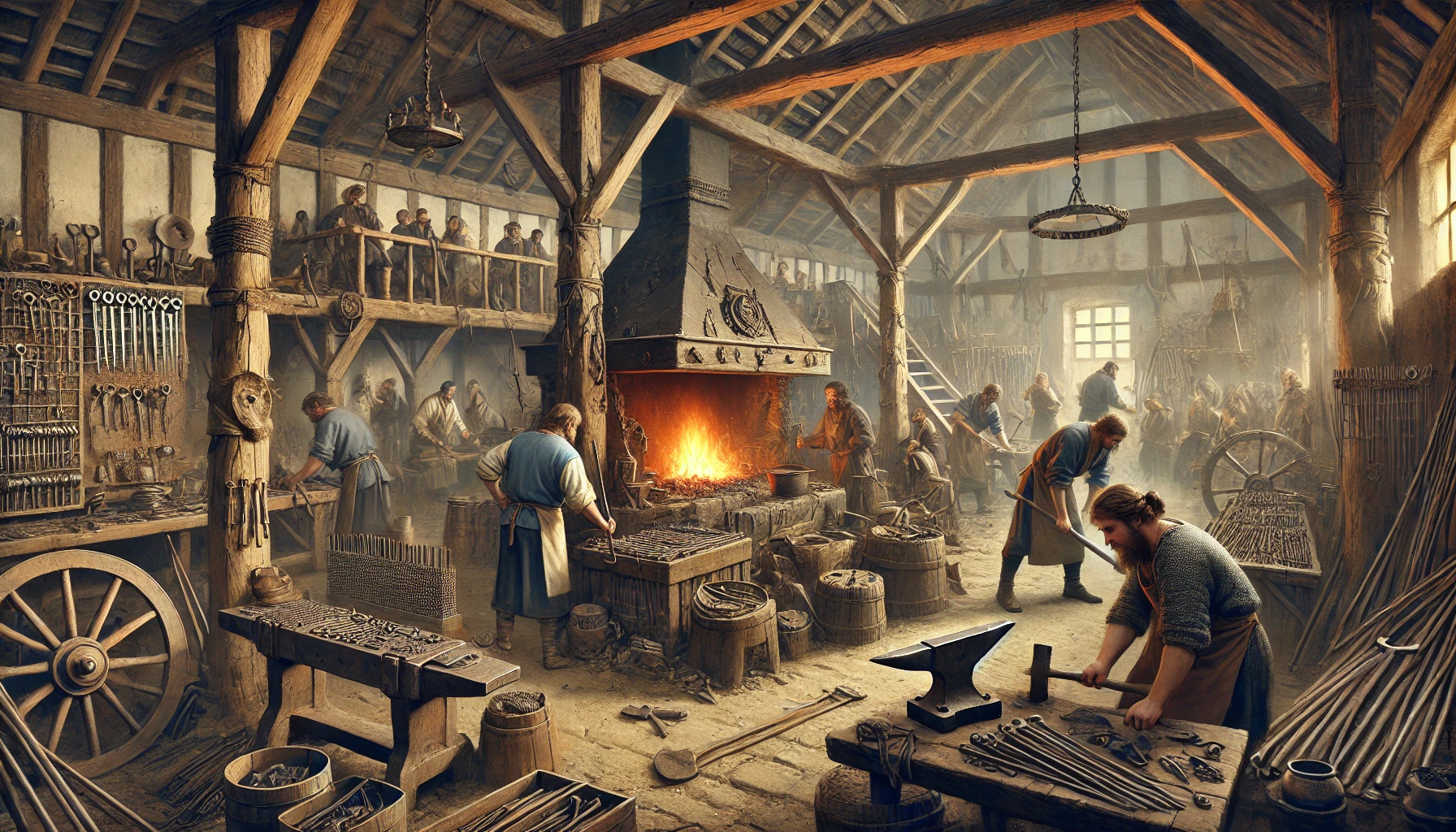
Iron Age
Discovery, Scientific
The development of iron smelting was a game-changer for human society. Unlike copper and bronze, iron is much more abundant and widely distributed in nature, making it a much more accessible resource.
Iron tools and weapons were much more durable and efficient than their copper and bronze counterparts. However, the smelting of iron requires much higher temperatures than copper or bronze, making it a difficult material to work with. The first step in the process of smelting iron is to mine iron ore and refine it into a usable form. This is usually done by crushing the ore and then heating it in a furnace to remove the impurities. Once the iron has been refined, it can be heated again with charcoal to produce the high temperatures needed to smelt the iron. The ability to smelt iron had a profound effect on human society. Iron tools and weapons allowed for more efficient agriculture, which in turn led to increased food production and population growth. Iron weapons also gave early kingdoms and empires a military edge over their rivals, allowing them to conquer and expand their territories. The widespread use of iron also allowed for the development of new technologies, such as the iron plow and iron horseshoes. These inventions helped to revolutionize agriculture and transportation, leading to even greater societal advances. In conclusion, the discovery of iron smelting was a major turning point in human history. The ability to create durable iron tools and weapons revolutionized agriculture, transportation, and warfare, leading to the development of more complex societies and civilizations. Previous event
